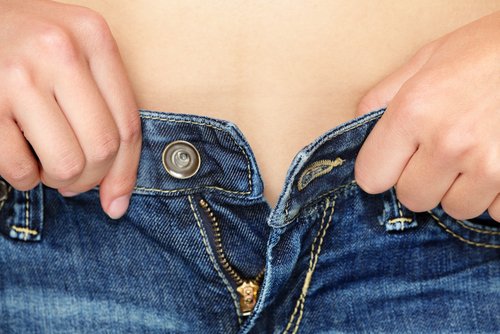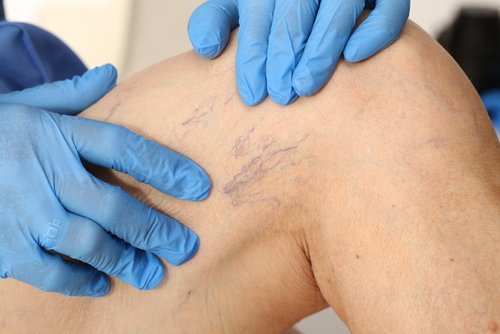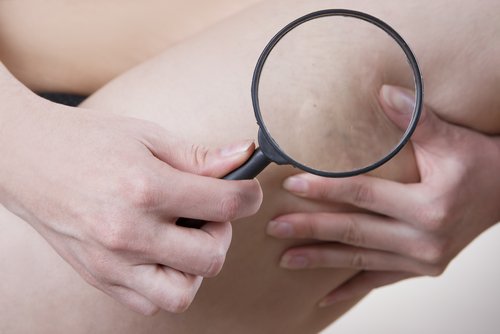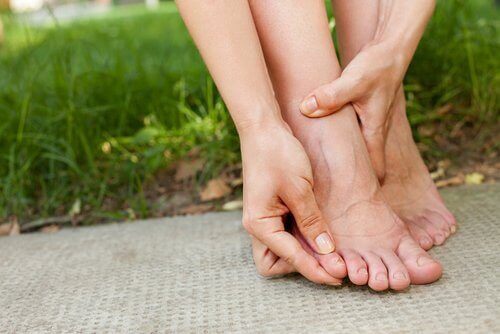The Dangers of Tight Clothes

Tight clothing shows off your figure and can make you feel great about your looks. Still, the dangers of tight clothes are something that can cause certain health problems. In this article, we’ll talk about what we wear and how it relates to the body. In addition, we’ll go over the dangers of tight clothes.
The dangers of tight clothes
We may think that this problem only affects women. However, men’s fashion trends have changed and tight clothes are also popular for them. They also tend to take more interest in their appearance.
Still, wearing super tight clothes can put your posture, circulation, and fertility at risk.
Some of the dangers of this habit include:
Infections
The most prevalent problem for women tends to be vaginal infections. This is due to fabrics that are used to make pants or underwear that don’t allow your skin to breathe as it should. Bacteria and moisture at higher than normal levels cause a change in the vaginal PH and result in an infection.
Discover: Foods that fight against infections
Lack of circulation
When clothes are very tight, they don’t allow for normal blood circulation. This occurs mostly in the legs from wearing pants for hours at a time.
It can also be risky in your abdominal area. You may frequently feel fatigue, “pins and needles,” and experience swelling in your limbs.
Varicose veins

If you often wear “skinny jeans” or tight clothing for a long time, you’re putting your veins even more at risk. As a result, they’ll be unable to do their job of pumping blood to your heart. This, in turn, causes varicose veins. What’s more, your legs may end up developing “spider veins”.
Posture problems
Some women wear smaller sizes than they should to look thinner or because they like doing so. Dresses, blouses, or bras that are too small hurt your back and can affect your spine. They can also cause poor posture in your neck, head, and shoulders.
Poor digestion
If you wear really tight clothing, you’ll probably feel uncomfortable after eating. After all, we often undo one or two buttons of our pants so that we don’t “burst” out at the seams!
Besides remembering not to eat too much food, you need to choose looser outfits so that your digestion isn’t affected.
Remember that when eating, your stomach dilates and needs more space. If not, you can suffer from acid indigestion, reflux, or nausea.
Difficulty breathing
If clothes are too tight, your chest, lungs, and diaphragm can be greatly affected. This is because they aren’t able to expand as they should.
When your respiratory system can’t function properly, your body can’t eliminate carbon dioxide and cells age prematurely.
As a result, you shouldn’t wear tight bras, blouses, or t-shirts that press against your torso.
Cellulitis

Even though tight clothes will not directly cause “orange peel” skin, it’s true that this habit can make the problem much worse.
Fat storage in the major tissues of the glutes and legs is what forms cellulitis. When the skin has no place to move to be comfortable, it can’t eliminate toxins.
If you suffer from cellulitis, pay attention to the pants that you’re wearing.
Nerve problems
Skinny jeans can cause a syndrome known as meralgia paraesthetica, which causes intense “pins and needles” and extreme sensitivity in the legs. This occurs mostly in the glutes and the thigh muscles.
As such, be careful if you spend many hours in the same pair of tight pants.
Muscular pain
Clothes can limit your ability to make certain movements and can make you feel uncomfortable.
You may walk like a robot or have poor posture that can bring on muscle pain later on. They can also cause tension or feelings of heaviness in different parts of your body.
Constipation
Often times, we blame constipation on heavy meals but that isn’t the only cause.
The clothes that you’re wearing is making the situation worse. When pants or skirts are too tight, your intestines are unable to do their job. The end result is gas and constipation.
Also read: 8 fruit smoothies that can say “good bye” to constipation
Fluid retention

Another one of the dangers of tight clothes is swelling in your calves and legs from your lymphatic system not working as well as it should.
Indeed, fluid retention is not just caused by consuming too much salt or not drinking enough water. It can also be the result of tight pants that people squeeze themselves into.
Tips to avoid wearing very tight clothes
Now that you know about the dangers of tight clothes, it’s time to take a look at your closets and avoid causing health problems.
Here are some tips:
- If you like to wear pants, choose leggings. They’re lightweight and won’t squeeze your legs as much.
- Buy clothes that fit you and don’t go by the sizes indicated. Many times, it’s better to not even look at sizes.
- When buying underwear, choose those made of cotton so that those areas can perspire without causing infections.
- If you have to spend many hours wearing the same thing (for example, at work), choose items that are comfortable and not tight. Your day will be much more enjoyable.
All cited sources were thoroughly reviewed by our team to ensure their quality, reliability, currency, and validity. The bibliography of this article was considered reliable and of academic or scientific accuracy.
- Carrillo-Meléndrez, H., Villamil-Cerda, D., Espinoza-Hernández, J., & Lacy-Niebla, R. M. (2015). Prurito vulvar: determinación de las causas más frecuentes y su tratamiento. Ginecología y Obstetricia de México, 83(03), 179-188.
- Peralta-Pedrero, M. L., Lagunes-Espinosa, A. L., Cruz-Avelar, A., Juárez-Cedillo, T., Rodríguez-Moctezuma, R., López-Carmona, J. M., & Munguía-Miranda, C. (2007). Frequency of gastroesophageal reflux disease in elderly patients attending a family medicine clinic. Revista Médica del Instituto Mexicano del Seguro Social, 45(5), 447-452.
- Sierra, J. M. (2000). Recuperación y reeducación perineal. Clínicas urológicas de la Complutense, (8), 425.
This text is provided for informational purposes only and does not replace consultation with a professional. If in doubt, consult your specialist.








